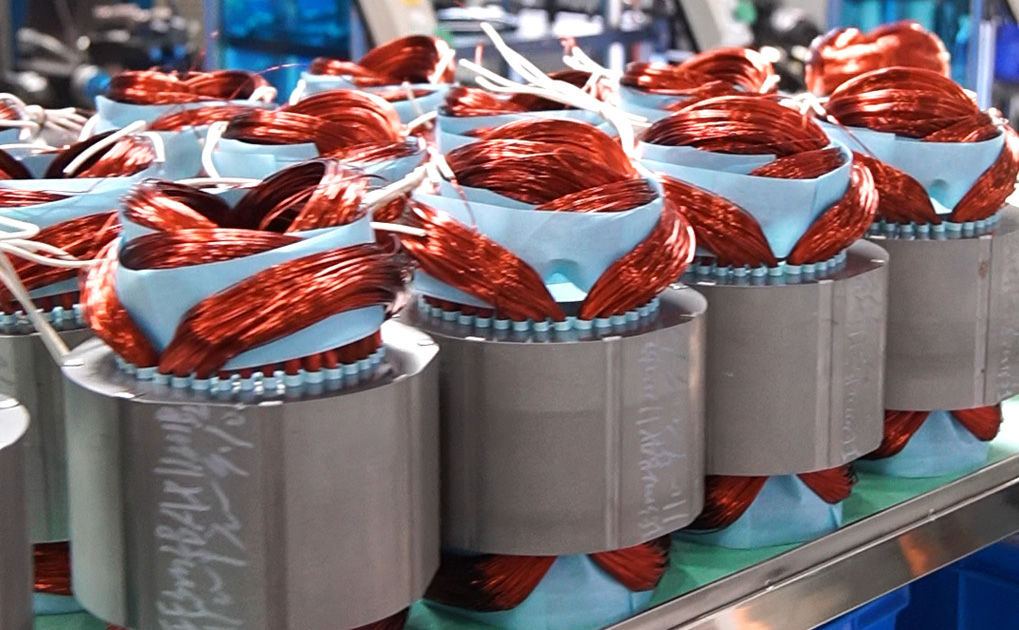In motor production, automatic wire embedding and manual wire embedding, as two core wire embedding technologies, have essential differences in production rhythm, process stability, and applicable scenarios, which directly affect the production efficiency, quality consistency, and long-term performance of motors. The core difference between the two lies in the degree of automation that controls the entire production process - automatic wire embedding relies on precision equipment to achieve standardized operations, while manual wire embedding relies more on manual experience to complete complex processes. This difference also determines their adaptability to different production needs.

1. Production efficiency
·Automatic wire embedding: By using robotic arms or specialized equipment to complete processes such as winding, wire embedding, and shaping, continuous and high-speed production can be achieved. A single device can embed tens to hundreds of motors per hour, greatly reducing production cycles and suitable for large-scale production.
·Manual wire embedding: relying on manual winding and embedding of wire slot by slot, the operation rhythm is slow, and due to the limitations of worker proficiency and physical strength, the wire embedding time of a single motor is usually several times that of automatic wire embedding. It is only suitable for small batch or customized production.
2. Embedding accuracy and consistency
·Automatic wire embedding: The equipment controls parameters such as winding tension, wire embedding depth, and slot filling rate through programming, and the error can be controlled within millimeters. The coil arrangement is neat and the tension is uniform, which can strictly ensure the symmetry and consistency of the motor winding and reduce performance fluctuations caused by manual operation deviations.
·Manual thread embedding: Accuracy depends on worker experience, and it is prone to problems such as skewed coil arrangement, uneven tension, and inconsistent slot filling rate, which may lead to unbalanced magnetic field, increased noise, decreased efficiency, and poor product quality stability during motor operation.
3. Product quality and performance
·Automatic wire embedding: The coil is tightly embedded and the insulation layer is less damaged, which can reduce eddy current and copper losses during motor operation and improve motor energy efficiency; Simultaneously reducing the risk of insulation layer scratches caused by manual contact, improving the insulation performance and service life of the motor.
·Manual wire embedding: Improper control of force during manual operation can lead to damage to insulation paper and scratching of wires, which may cause short-circuit hazards; Uneven coil tension can increase vibration and noise during motor operation, and long-term use may affect motor reliability.
4. Cost and labor dependence
·Automatic embedding: The initial equipment investment is relatively high (requiring customized specialized production lines), but in the long run, it can reduce labor costs and lower the scrap rate caused by human errors, making it suitable for cost optimization in large-scale production.
·Manual thread embedding: Low equipment investment, but requires a large number of skilled workers, resulting in high labor costs; And the manual operation has a high scrap rate (such as wire embedding errors and insulation damage), and the long-term comprehensive cost may exceed that of automatic wire embedding.
5. Applicable scenarios
·Automatic embedding: Suitable for standardized and mass-produced small and medium-sized motors (such as household motors and industrial general motors), especially for high-efficiency energy-saving motors with high precision requirements (such as IE3/IE4 levels), it has advantages.
·Manual wire embedding: suitable for large motors, special customized motors (such as irregular slot motors, multi pole motors), or small batch trial production scenarios. It can flexibly cope with complex winding structures, but due to efficiency and accuracy limitations, it is difficult to meet high standardization requirements.
Automatic wire embedding is the mainstream trend of industrial mass production, with core advantages of high efficiency, high precision, and high consistency, which can improve motor performance and reduce long-term costs; However, manual thread embedding relies more on manual skills and is suitable for scenarios with high flexibility requirements but small batch sizes. With the increasing demand for energy efficiency and quality in the motor industry, automatic wire embedding technology has become the core process for the production of mid to high end motors.
Hengda Electric has always been dedicated to the research and development, production, and service of various types of motors. With advanced technology and equipment, lean manufacturing processes, reliable product quality, and satisfactory after-sales service, the company provides customers with the most suitable motor professional solutions and creates greater social value.







